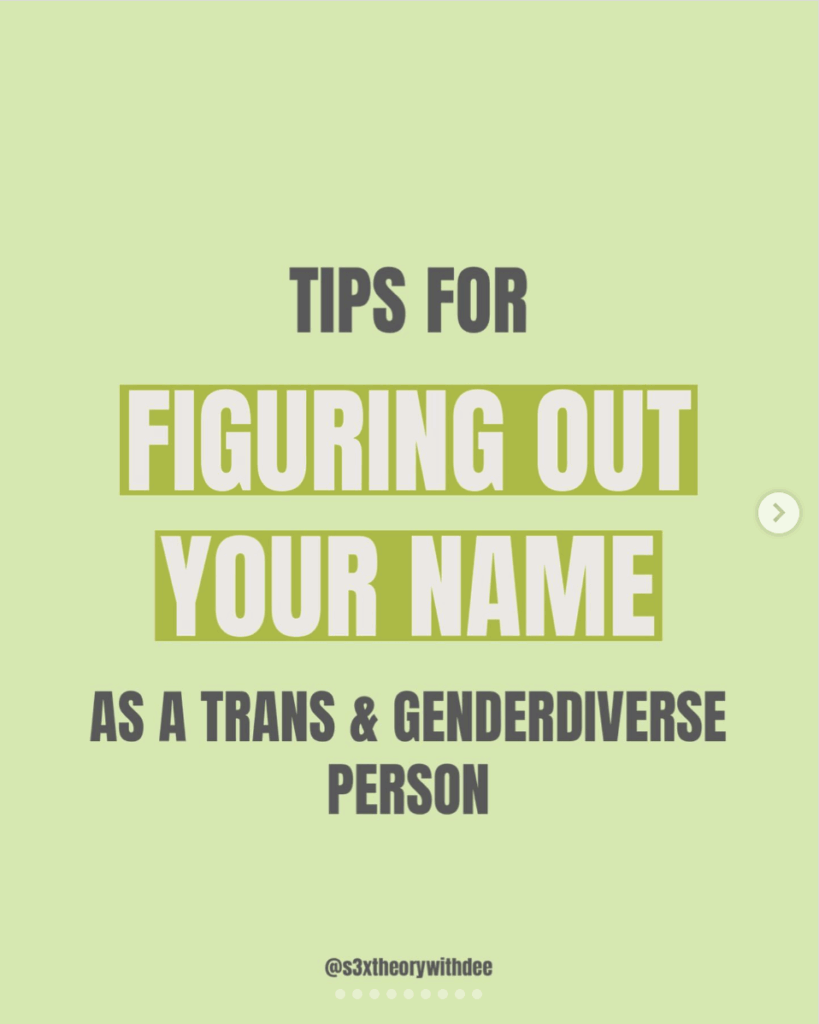How to legally change your name in the UK
Whether you have your name officially recognised on government documents or not, you are still trans+ and your identity is valid
The most important thing is how you feel about yourself, and what makes you feel most comfortable in your body and identity. Part of this may include a wish to legally change your name.
A government stamp of approval doesn’t make you any more or less trans+. At the same time, some people find it validating to have their official documents match their identity. It’s also a sad reality that these legal changes can mean a lot within society. This can mean more acceptance and validation from others, which can make life easier.

So, we’ve put together this handy how-to guide on how to legally change your name. You may also want to know about how to legally change your gender and, if so, we have more information here.
Using a new name
You don’t need to go through the legal process of changing your name in order to start using a new name. Share your new name with the people around you, if you feel safe to do so, and explain that this is the name you will be using from now on. You deserve to have this request respected.
If those around you are struggling to remember, a handy tip for them is to update your name in their phone contacts. This means that every time you message, they get a reminder. There are more tips in this personal blog piece on socially transitioning.

However, if you want to change your name on official documents, like your passport or driving licence, you can follow the process below.
Changing your legal name
A legal name change is one recognised by government organisations. The best way to do this is via a ‘deed poll’. There are two ways to get a deed poll: you can make an ‘unenrolled’ deed poll yourself, or you can apply for an ‘enrolled’ deed poll.
It’s up to you whether you choose ‘unenrolled’ or ‘enrolled’. This basically means you’re applying to the Royal Courts of Justice (enrolled), or doing it through an agency or solicitor (unenrolled). Some organisations may only accept one type of deed poll as proof of your new name, so check with these organisations (for example your bank) if you’re not sure.
Here are some key differences between the two types of deed poll:
‘Unenrolled’:
📝 You need to be aged 16+.
📝 You can download a free template from the government website to create your own deed poll.
📝 This option is free.
📝 A specialist agency or solicitor can make this type of deed poll for you, but they may charge a fee.
📝 You will need two witnesses to sign the deed poll.
📝 This option is just as legally binding as going through the ‘enrolled’ route.
This is the name change deed template provided on the government website:
“I [old name] of [your address] have given up my name [old name] and have adopted for all purposes the name [new name].
“Where applicable, I have informed the police that I have given up my name [old name] and have adopted the name [new name] and understand that a failure to do so is a criminal offence.
“I also understand that when I apply for official documents in my new name, such as a British Passport, the relevant authorities may check the history and validity of my old name [old name] and new name [new name]. They may also check the information in any other supporting documents they have requested.
“Signed as a deed on [date] as [old name] and [new name] in the presence of [witness 1 name] of [witness 1 address], and [witness 2 name] of [witness 2 address].
“[your new signature], [your old signature]
“[witness 1 signature], [witness 2 signature]”
‘Enrolled’:
📑 You need to be aged 18+ to change your own name through the ‘enrolled’ route.
📑 If you’re under 18, you will need the agreement of everyone who has parental responsibility for you. The form to complete this name change is also slightly different.
📑 The application costs £48.32.
📑 Enrolling a deed poll will mean you are putting your new name on public record. Many trans+ people choose ‘unenrolled’ because of this.
📑 To enrol a deed poll with the courts, you will need to complete a few documents and send these off with evidence of your British citizenship (such as photocopies of your birth certificate or passport).
How to enrol a deed poll
As with many official documents, the forms for an enrolled deed poll might feel a bit intimidating. But they aren’t as complicated as they look. We’ve set out the steps you need to take to enrol a deed poll below:
1️⃣ Fill in the form ‘Change of name deed for an adult (Form LOC020)’. You will need two witnesses to sign this document.
2️⃣ Ask someone to fill in the form ‘Deed poll statutory declaration for an adult (Form LOC021)’. They must be a Commonwealth or British citizen who has known you for at least 10 years. They can’t be related to you, and they must either own or rent their usual residence, or be responsible for paying household bills there. Once this form has been completed, you will need to take it to an authority (such as a solicitor) to swear that this information is true. It’s worth pointing out that you will be charged a fee by the solicitor (or similar authority) to do this.
3️⃣ Fill in ‘Notice for the London Gazette for an adult (Form LOC025)’
4️⃣ Collect evidence that you are a British or Commonwealth citizen (such as photocopies of your birth certificate or passport). If you are adopted, you will also need to send copies of your adoption documents.
5️⃣ Send all of these forms, and the evidence of your citizenship to the King’s Bench Division, Enforcement Section, Room E15, The Royal Courts of Justice, Strand, London, WC2A 2LL. Make sure to include a cheque made payable to ‘HMCTS’ to cover the £48.32 fee. You can also pay this fee by card, but you would have to do this over the phone.
6️⃣ Your forms will be checked. If everything has been completed correctly, it will be approved and the original deed will be returned to you as proof of your name change.
7️⃣ Congratulations! Once this process has been completed, you’ll then be able to change your name on your driving licence and get a new passport if you want to.
We hope this guide has helped you feel more confident in your rights, to assert who you are and access government support. It’s a lot! But if you’re still feeling confused, or need any more help, there is a list of resources below.
Sandy, she/her
This article is part of our “Am I Trans?” Translating Sex, Identity & Relationships content series: supporting trans+ young people to access sex and relationships education that is relevant to their experiences and needs. Discover the full series here.
We use the term trans+ in our articles as an umbrella term intended to incorporate all transgender, non-binary, agender and genderfluid identities.
Some of the content addresses potentially triggering topics, such as transphobia and gender dysphoria. We’ve added specific content warnings to these pieces, but please take a moment to check in with yourself and how you’re feeling before diving into the series.
Other support
- Discover the full series
- Support & resources for trans+ young people
- Switchboard helpline – for anyone, anywhere in the country, at any point in their journey to discuss anything related to sexuality and gender identity
- Gendered Intelligence – Knowledge is Power resource for young trans+ people
Read more
Last Reviewed 22 April 2024
Image Credit: Pexels







